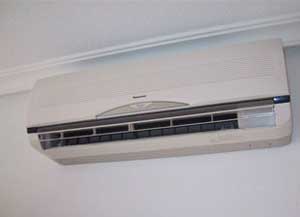The temperature of air conditioning keeps the body from sweating, especially for children, helping to limit the loss of salt and water from the body. However, we should also know how to use air conditioning to avoid its harmful effects.
 |
|
(Photo: b1d) |
Children who run and play, and adults working in hot outdoor conditions, may suddenly enter an air-conditioned room with a temperature drastically different from the outside. This sudden change can lead to rapid changes in body temperature, causing chills, shivering, and goosebumps as peripheral blood vessels constrict and skin pores close to retain heat.
If the body cannot adjust, particularly in individuals with pre-existing chronic conditions such as high blood pressure, low blood pressure, diabetes, those recovering from illness, and young children, it can result in severe consequences such as dizziness, fainting, facial paralysis from nerve damage (specifically the facial nerve), cerebrovascular accidents, or even death.
Typically, these individuals may experience a sore throat, dry throat, and a few hours later develop a fever ranging from 38-39°C, sometimes reaching 40°C, along with clear nasal discharge, coughing that begins as dry and later becomes productive with thin white phlegm. Those with allergic predispositions may sneeze repeatedly upon entering an air-conditioned room, experience nasal itching, redness at the tip of the nose, and occasionally watery eyes, with nasal congestion varying from complete to partial, depending on the individual. There have been cases of sudden colds attributed to air conditioning.
The skin may feel very cold to the touch, and the mucous membranes in the nasal and throat areas may appear pale, with an increased secretion of clear mucus. The nasal turbinates may be swollen and possibly have a light purple hue. In such cases, it is advisable to turn off the air conditioner, cover oneself with a warm blanket until sweating occurs, drink warm water (adding a little roasted ginger if possible), and take some medications like Babyplex or Decolgen.
If, after two days of medication, the symptoms do not improve and worsen with prolonged fever, yellow-green nasal discharge, increased coughing with thick phlegm, and occasional difficulty breathing—especially in young children—it is crucial to consult a doctor for accurate and timely treatment.
Improper use of air conditioning is one of the contributing factors to the onset of allergic rhinitis, bronchial asthma, and bronchospasm. To prevent these harmful effects: Keep the air conditioning temperature not too different from the ambient temperature (about 4-5°C). Avoid direct airflow from the air conditioner blowing directly onto sleeping areas. Wipe off sweat before entering the air-conditioned room. Place a bowl of water in the air-conditioned room to help increase humidity.
Those who are required to work in central air-conditioned rooms at low temperatures should carry a jacket or long-sleeve shirt depending on their tolerance.


















































